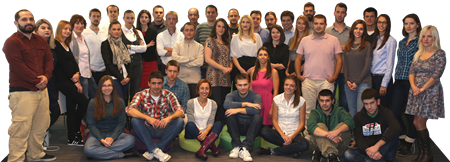MASTERS OF WORLD ARCHITECTURE (4 books)
| Cena: |
| Želi ovaj predmet: | 1 |
| Stanje: | Polovan bez oštećenja |
| Garancija: | Ne |
| Isporuka: | Pošta Post Express |
| Plaćanje: | Tekući račun (pre slanja) Ostalo (pre slanja) |
| Grad: |
Pančevo, Pančevo |
ISBN: Ostalo
Godina izdanja: 1960
Oblast: Arhitektura
Jezik: Engleski
Autor: Strani
MASTERS OF WORLD ARCHITECTURE (4 books)
George Braziller, Inc, New York, 1960
MAJSTORI SVETSKE ARHITEKTURE u 4 KNJIGE
in good condition
1250g
Architect biographies for Alvar Aalto by Frederick Gutheim, Le Corbusier, by Francoise Choay, Ludwig Mies Van De Rohe by Arthur Drexler and Pier Luigi Nerv by Ada Louise Huxtable
Illustrated with black and white photographs and drawings.
LE CORBUSIER by Francoise Choay
(Charles Edouard Jeanneret), founder of L`Esprit-Nouveau, the avant-garde magazine to which he contributed chiefly his ideas of town planning. His early work consisted mainly of individual villas, although his passionate interest was still city planning. His largest project to date is the city of Chandigarh, the new political capitol of Punjab, India.
ALVAR AALTO by Frederick Gutheim
Alvar Aalto has, among his many honors, membership in the Finnish Academy and the Gold Medal of the Royal Institute of British Architects, awarded in 1957. Still winning competitions, Aalto has done a wide variety of work, including apartment houses, art centers, town halls and museums in many European countries and in the Middle East.
LUDWIG MIES VAN DER ROHE by Arthur Drexler
Born in Aachen, Germany in 1886. His father was a mason and owned a small stone-cutting shop where as a young boy Mies learned the elements of masonry construction. He received no formal architectural training, but was apprenticed as a draftsman and designer of classical stucco ornament in local architectural offices. Later he went to Berlin and from 1908 to 1911 he worked for Peter Behrens, opening his own architectural office in 1912. After the First World War, Mies, supporting avant-garde art movements and publications, emerged as a strongly original architect. Some of his most daring projects, the glass skyscrapers among them, date from this period in the early 1920`s. Later as an official of the Deutscher Werkbund he directed the important Stuttgart Exposition of 1927, in which the most notable European architects participated. His German Pavilion for the Barcelona Exposition of 1929 would have assured him lasting fame if he had never built anything else. He became director of the Bauhaus in 1930 by closed it three years later because of the unfavorable cultural climate in Germany, the reason also why he departed in 1938 to become a permanent resident of the United States. Here he became head of the architectural department of the Illinois Institute of Technology and planned his first extensive project: a new campus for the Institute. Many of the buildings have now been completed. Also in Chicago he has built a spectacular series of glass-wall steel-frame apartment skyscrapers fronting Lake Michigan. The Farnsworth House of 1950, his first private-house commission in the United States, demonstrating his structural ideas on a domestic scale, has occasioned extensive discussion in architectural circles. His Seagram Building is one of the finest examples of a skyscraper in New York or anywhere else. Since his retirement from the Illinois Institute of Technology he has devoted full time to his private architectural practice.
PIER LUIGI NERVI by Ada Louise Huxtable
This book by Pulitzer-Prize-winning critic Ada Louise Huxtable is a monograph on the great Italian architect and structural engineer Pier Luigi Nervi (1891-1979), which was first published in 1960. PIER LUIGI NERVI was born in Sandrio, Italy, on June 21, 1891. He completed his formal studies at the civil engineering school of the University of Bologna in 1913. After graduating, he worked for the Società per Costruzioni Cementizie until 1920, receiving thorough experience in the design of reinforced concrete. In 1920 he formed the partnership of Soc. Ing. Nervi e Nebbiosi. During this association, which lasted until 1932, several noteworthy structures were built, especially the Florence Municipal Stadium. In 1932 he joined with a cousin to form Ingg. Nervi e Bartoli, the design and construction firm which he headed; the famous airplane hangars of 1938-1943, won by the firm in competition, brought Nervi international attention. In the mid-1940s he developed the versatile material -Ferro-cement, a system of layers of fine steel mesh sprayed with cement mortar, which he used in the extraordinary Grand Salon of the Turin Exhibition Hall (1949). With this, building, Nervi became firmly established as one of the world`s foremost engineers, a reputation reinforced again and again by subsequent works, including the completion of three stadia for the 1960 Olympics in Rome. A member of the International Congresses of Modern Architecture (CIAM), he was also a Professor of Technology and Construction Techniques at the University of Rome. He was awarded Gold Medals by the Institution of Structural Engineers in the UK, the American Institute of Architects (AIA Gold Medal 1964), and the RIBA. In 1957, he received the Frank P. Brown Medal of The Franklin Institute and the Wilhelm Exner Medal.
Ne šaljem u inostranstvo.
Knjige i ostale predmete šaljem isključivo nakon uplate na moj račun. Troškove poštarine za slanje snosi kupac.
PORUKE PRIMAM ISKLJUČIVO PREKO KUPINDA.
KNJIGE ŠALJEM POSLE UPLATE (cena plus poštarina) na moj račun.
Tiskovina je do 2 kg, preko te težine pošiljka može da se šalje kao paket ili post expres.
Ne šaljem na KIM i inostranstvo u svakom obliku istog.
Nažalost, ne postoji mogućnost ličnog preuzimanja pošiljke.
Molim vas ako imate neka pitanja, pre kupovine, pošaljite mi poruku (isključivo) preko KUPINDA. HVALA.
Predmet: 78582989















